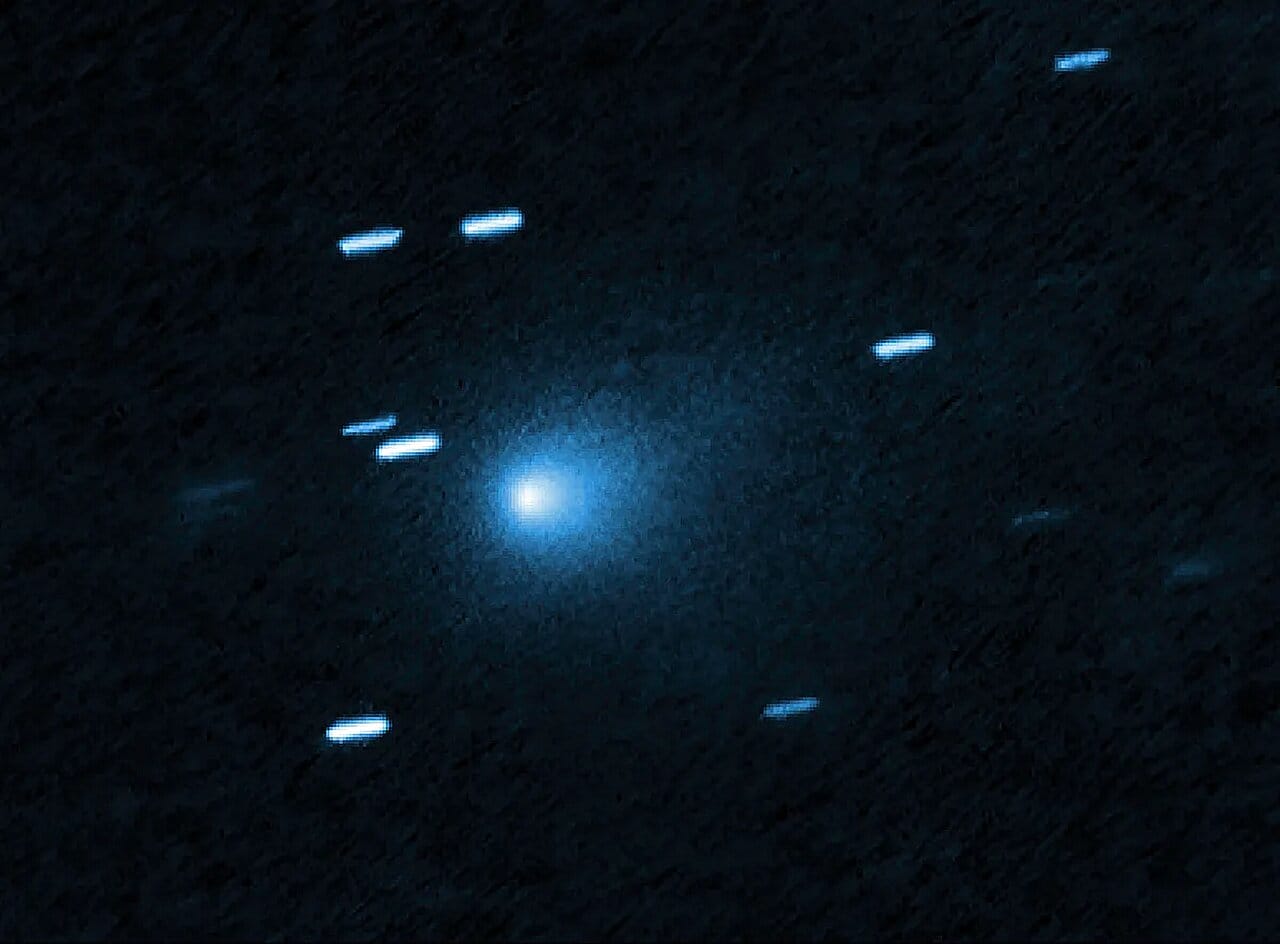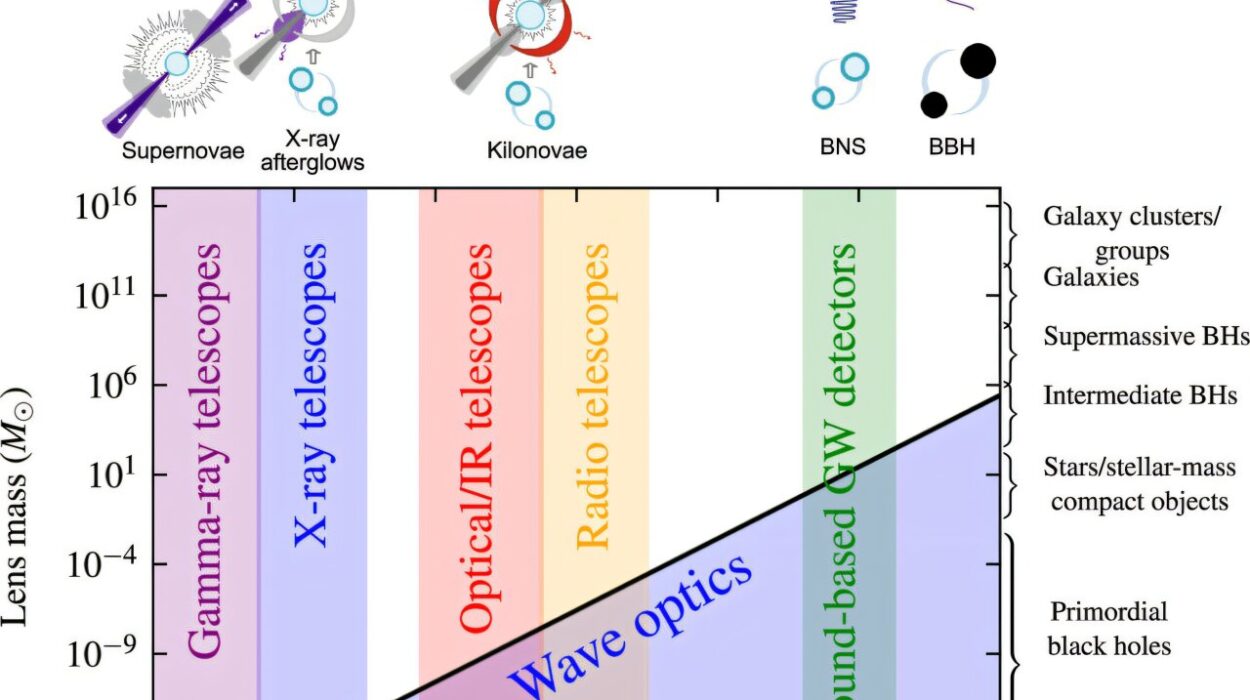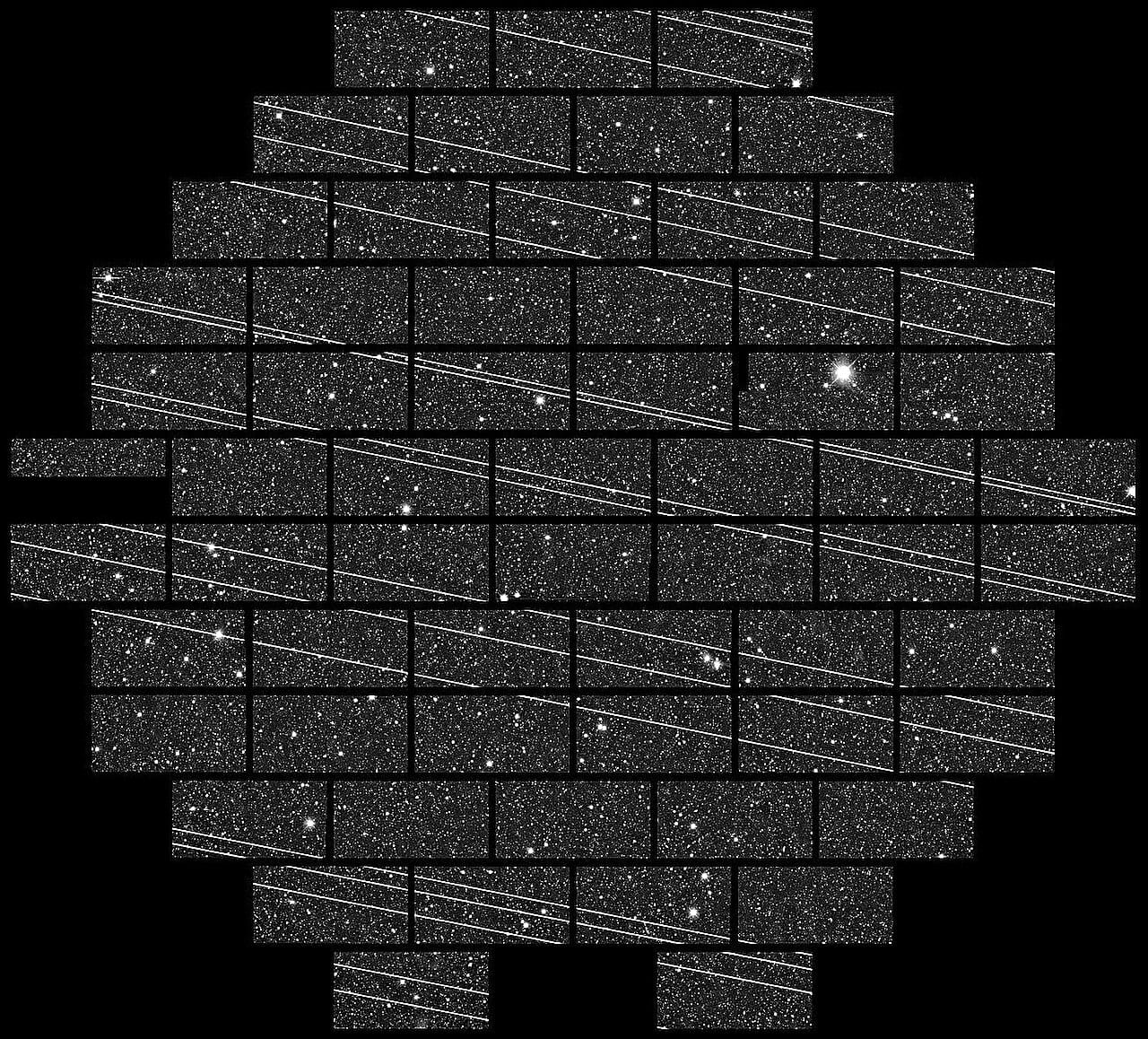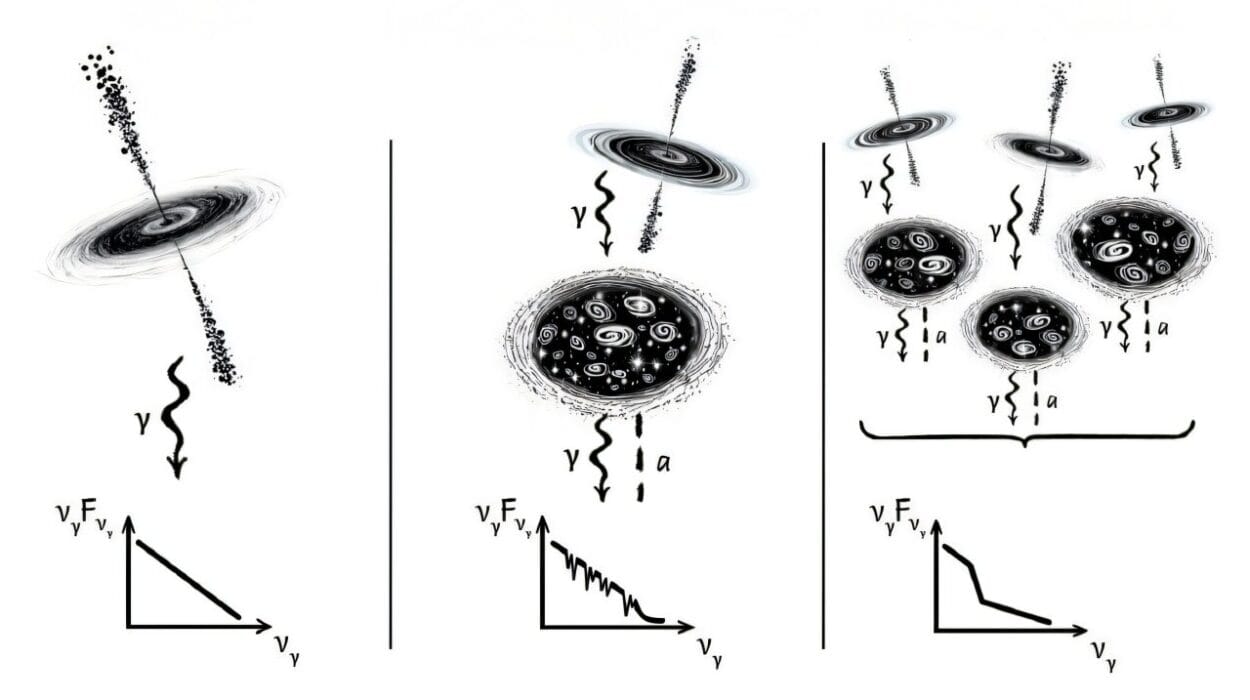Astronomers have once again caught sight of something truly extraordinary — a traveler from another star system passing through our cosmic neighborhood. The object, named 3I/ATLAS, is only the third confirmed interstellar object ever observed, following in the footsteps of the enigmatic ‘Oumuamua in 2017 and the comet Borisov in 2019. Using the sharp eyes of NASA’s Hubble Space Telescope, scientists have captured a close look at this rare wanderer, revealing it is already active — long before it reaches the inner solar system.
Activity Nearly Four Times Farther from the Sun than Earth
Right now, 3I/ATLAS is located about 3.8 astronomical units (AU) from the Sun — nearly four times farther than Earth’s orbit. Even at this great distance, where sunlight is only a fraction as intense, the object is already stirring to life.
The Hubble images reveal a hazy halo of dust surrounding the nucleus and a faint, sunward-facing side actively shedding material. On the opposite side, radiation from the Sun sweeps the dust into a delicate tail pointing away into the darkness, much like a comet.
“This is incredibly exciting,” said lead researcher David Jewitt of UCLA. “It means the heat from the Sun is already affecting the object’s surface — giving us a chance to watch an interstellar body in action, in real time.”
Losing a Car’s Worth of Mass Every Few Minutes
By carefully studying the brightness and shape of the coma — the glowing cloud of dust surrounding the nucleus — Jewitt’s team estimated just how much material 3I/ATLAS is losing. Their calculations suggest between 6 and 60 kilograms of dust are streaming off the surface every second, depending on the grain size of the particles.
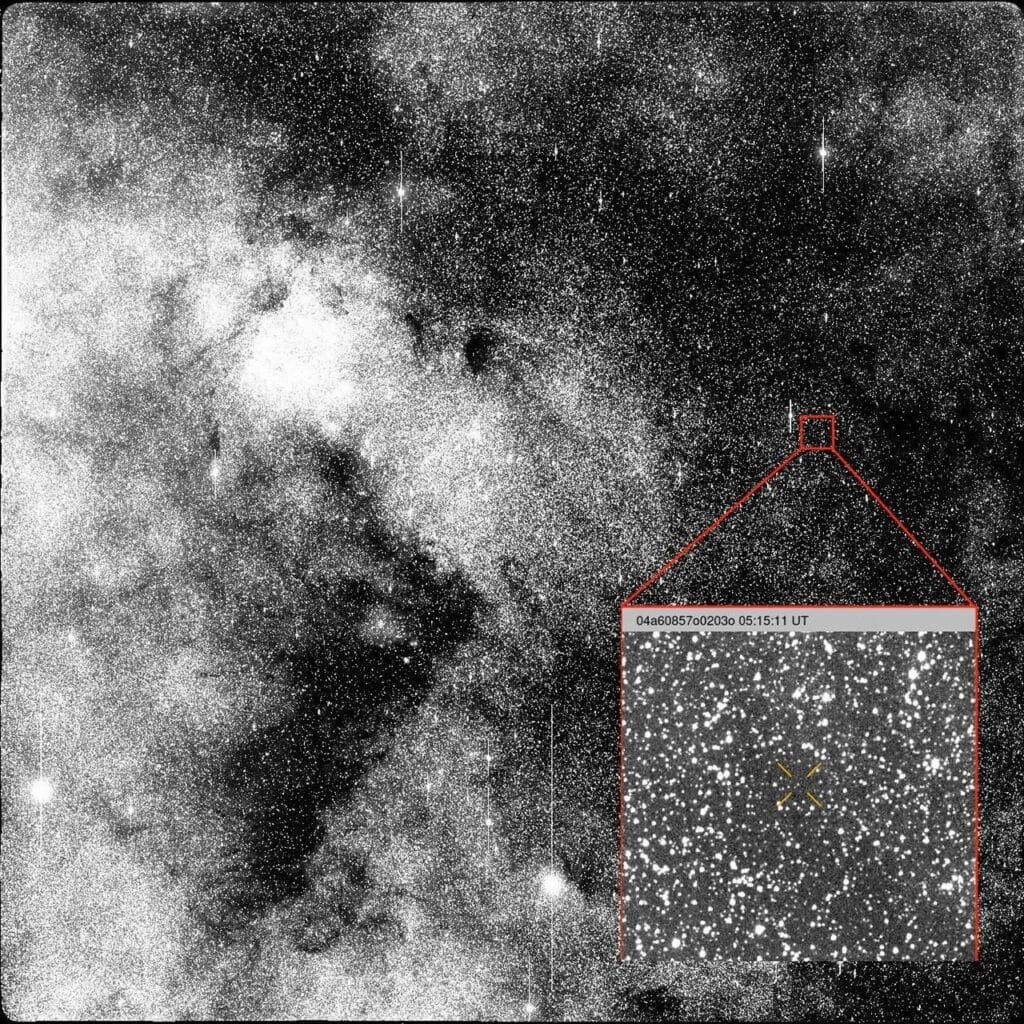

That’s equivalent to shedding the mass of a small car every few minutes. For a relatively small body from another solar system, that’s a significant loss — and a rare opportunity for astronomers to measure such activity at a great distance.
A Nucleus Hidden in a Halo of Dust
The true heart of 3I/ATLAS, its solid nucleus, is hidden beneath the coma, making it difficult to measure directly. By modeling how sunlight reflects off the dust, the researchers estimate the nucleus has a radius of less than 2.8 kilometers — about the size of a small town — assuming it reflects only about 4% of incoming light, similar to charcoal.
But if the activity is being driven by the sublimation of carbon monoxide ice (which turns directly from solid to gas in the warmth of sunlight), then the nucleus must be at least 0.16 kilometers in radius, and potentially larger if less volatile materials are responsible for the outgassing.
These size limits are more than just numbers — they are vital clues to the object’s composition and its journey through space. Different ices require different amounts of heat to vaporize, so pinpointing when the activity starts can tell astronomers what kind of materials lie beneath the surface.
Messengers from Distant Stars
Interstellar objects are astronomically rare. For billions of years, our solar system has been visited by countless comets and asteroids born here, but only three times in human history have we confirmed an object from another star system passing through. Each one carries the history of its home — chemical fingerprints, mineral structures, and surface textures sculpted by an alien sun.
3I/ATLAS, with its dusty veil and faint tail, offers a direct sample of matter forged under conditions entirely different from those of our own solar system. Studying it could reveal whether planetary systems across the galaxy share similar building blocks, or whether each one writes its own chemical story.
A Glimpse into the Galaxy’s Past
The Hubble observations of 3I/ATLAS mark a major step in understanding these rare galactic travelers. Every bit of data — from its size and brightness to the rate at which it sheds dust — helps scientists piece together not only the nature of this single object, but also the dynamics of planetary systems beyond our Sun.
“Each interstellar visitor is a message from a distant world,” Jewitt said. “3I/ATLAS is whispering its secrets now, and thanks to Hubble, we’re listening more closely than ever before.”
As it continues its long arc around the Sun and back into interstellar space, 3I/ATLAS will leave behind no trace except the knowledge it carries — a fleeting glimpse into the vast and ancient processes that shape the galaxy.
